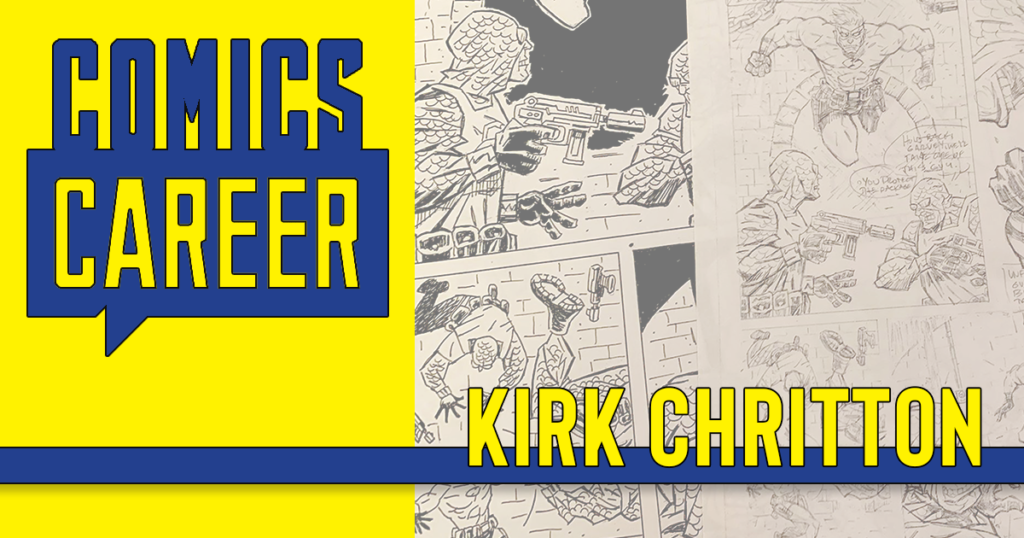There are many wonderful books, videos, and resources about creating comics. When I was a kid, there weren’t very many at all. My local libraries—a tiny small-town location and my school library—only had “how to draws cartoon†books that showed the faces of 1930s-style cartoon characters in those useless four-step illustrations. You know the ones:
Step one: a lightly scribbled circle dissected by a couple of light lines
Step two: Some hints of a mouth and eyes are added
Step three: Some extra scribbles are all over the place
Step four: A completely finished, inked drawing of Gaddlewinky Goose emerges fully formed from the head of Zeus.
Then in 1978 an earth-shattering new book arrived that was designed exactly for 14-year-old me: How to Draw Comics the Marvel Way. I worshiped this book. I don’t think I ever owned my own copy, but my buddy Robb Cox had one. We pored over it with rabbinical fervor, working to divine its most sacred and arcane secrets.
In hindsight, there are very few deep insights in How to Draw Comics the Marvel Way. It has a lot of pages that are just as useless as those Gaddlewinky Goose four-step exercises. In fact, it condenses them into just two steps: scratchy stick figures transform into fully-rendered panels by Jack Kirby or John Buscema.
Here’s what I remember learning from How to Draw Comics the Marvel Way.
- Marvel comics of the time were created in plot, art, dialogue order. (Don’t do this.)
- Comic books are drawn on illustration board larger than the printed size.
- The inker finishes the art with brushes and India ink.
- You can measure the height of characters in “heads†and Marvel superheroes are about a “head†taller than real people.
- Comic art is far more exciting when the figures are drawn in exaggerated poses.
- Diagonal lines and action are more dynamic than straight-on lines and poses.
You know, for a 14-year-old who was starved for any insights at all, that was plenty to learn. It certainly set Robb and me off on a creative frenzy.
By the way, the last of those lessons may be the most important. It’s certainly the one that I see many aspiring comics artists struggle with even after they’ve mastered many other skills.
Time after time, I see artists draw page after page, panel after panel with characters centered, faces pointed directly to the “camera.†Their backgrounds or panel compositions are symmetrical or nearly so.
Flip open the nearest professionally produced, action-oriented comic book or graphic novel. How many panels can you find where a character is facing square into the camera? Or 100% in profile? How often is someone standing in the dead center of a panel? How often do vehicles move in flat lines parallel to the panel borders? When you do see those panels, they’re typically inserted as a dramatic effect – which works because they are rare.
Artists, check your own work. Are you too reliant on symmetry? Straight-on portraits? Full profiles? In reality, those square-on views almost never happen. Someone is turned 10% or 23% or 41% away from you. Vehicles turn and are viewed from an angle. The world happens off-center.
Writers, this can apply to you, too. Are you calling for symmetrical poses in your panel descriptions? For that matter, is your writing lacking in diagonal energy? Are scenes playing out in predictable ways. Do your characters speak in stock phrases and clichés? Does your plot just move ahead predictably? Let’s add some zig and zag to that script!
Hmm. I guess that was a pretty good book after all.

